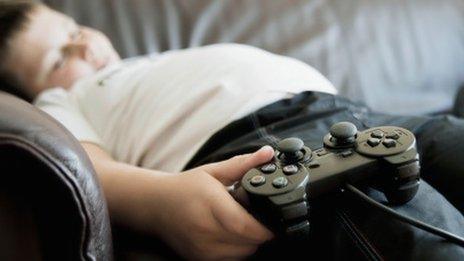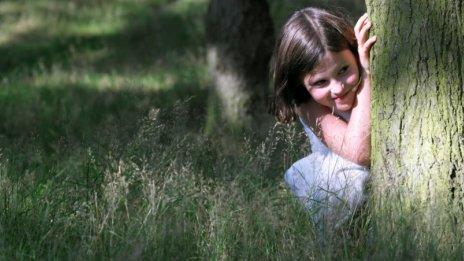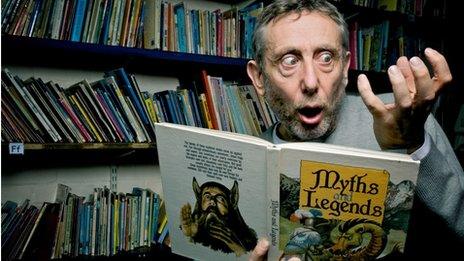Children 'satisfied, yet fear of bullying remains'
- Published

In 2013, there were an estimated 12 million children, aged 0 to 15, in the UK
Analysis of research into childhood in the UK paints a mixed picture of high satisfaction on the one hand, and fear of bullying and crime on the other.
Data compiled by the Office of National Statistics (ONS) finds over three-quarters (77%) of children aged 10-15 are satisfied with their lives.
Yet 12% of those aged 10-15 reported being a victim of crime, and 12% said they were frequently bullied.
The ONS also found children quarrelled more with mothers than fathers.
The ONS report - Measuring National Well-being, Exploring the Well-being of Children in the UK, 2014, external - draws on three surveys of childhood: The Children's Society's Good Childhood Report, the Household Longitudinal survey and Understanding Society.
It found three-quarters (75%) of children aged 10 to 15 thought the things they did in their lives were worthwhile and just under three-quarters (74%) reported a moderate to high level of happiness.
Also, 88% liked the neighbourhood they lived in.
The proportion of children in England aged 2 to 15 who were overweight, including obese, was 28% in 2012.

Obesity in children was shown to be a real concern
Children aged 11 to 15 years were more likely to be overweight, including obese (35%) in 2012 compared with those aged 2 to 10 (23%).
Talking with mum and dad
The study picked up on the importance of family relationships.
The ONS analysis noted that children's desire to talk issues through with their parents appears to have grown.
It found that around 6 in 10 UK children aged 11 to 15 (61%) talked to their mother about "things that matter" more than once a week in 2011-12, compared with half (51%) in 2002.

Similarly, 37% talked to their father frequently in 2011-12, compared with 31% in 2002.
However, children reported quarrelling more with their mothers than their fathers.
In 2011-12, around 28% of those aged 10 to 15, said they quarrelled with their mother more than once a week, while 20% quarrelled with their father more than once a week.
The ONS says this might be explained by the fact that more children live with their mothers than with their fathers.
Appearance
The ONS analysis found a key part of children's overall well-being was their satisfaction with their appearance.
In 2011-12, nearly three-quarters (74%) of children aged 10 to 15 were relatively happy with the way they looked, and 1 in 8 (12%) were relatively unhappy with their appearance.

Girls were more self-conscious about their looks than boys
But girls were less likely to be content with their looks: in 2011-12, girls aged 10 to 15 were more than twice as likely to be relatively unhappy with their appearance as boys of the same age, at 17% and 8% respectively.
Not surprisingly, technology played an important role in children's lives, with nearly all children (98%) aged 10 to 15 in the UK using a computer at home in 2011-12.
Girls were more likely to use it to complete their homework, while boys were more likely to play computer games.
In total, 85% belonged to a social network site, 96% had a games console, and 75% spent more than an hour on a school night watching TV or DVDs.
In 2013, there were an estimated 12 million children, aged 0 to 15, in the UK - nearly a fifth of the population.
Lily Caprani, director of strategy at The Children's Society, said: "This report shows that too many children are suffering from being victims of crime, as well as bullying and low self-esteem.
"Very often as a society we treat teenagers as people to be feared, but we need to change our attitudes and recognise they are often vulnerable victims."
Too few children were talking to their mums and dads regularly "about the things that matter," she added.
- Published28 August 2014

- Published4 January 2012

- Published26 September 2014
